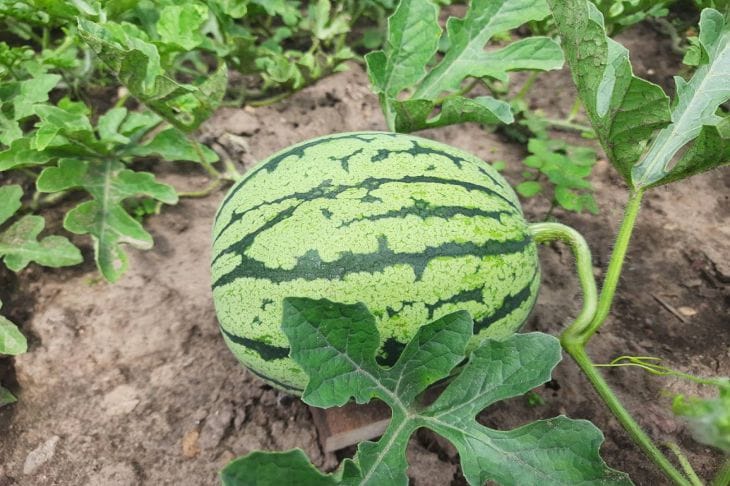How to water watermelons in open ground: secrets of a juicy harvest
Growing watermelons requires a special approach to watering.
Proper irrigation is the key to producing sweet and juicy fruits.
Experienced gardeners know that the watering regime directly affects the taste and size of watermelons, as well as their resistance to diseases.
Features of watermelon watering
Watermelons are moisture-loving plants, but overwatering can harm them no less than drought.
The root system of these melons goes deep into the soil, so it is important to ensure uniform moisture throughout the entire root layer.

The frequency and volume of watering depend on several factors: climate conditions, soil type, and plant development stage. In hot weather, watermelons need more frequent watering than on cool days.
Watering regime at different stages of growth
After planting seeds or seedlings, the soil should be kept moist. At this stage, watering should be frequent but moderate.
As the plants grow, the frequency of watering is reduced, but the volume of water is increased.
During the period of flowering and formation of ovaries, watering should be limited. Excess moisture at this time can lead to the flowers falling off and the ovaries rotting.
It is enough to water watermelons once a week, unless there is a prolonged drought.
When the fruits begin to form, the plants' need for moisture increases. At this time, it is recommended to water the watermelons generously, but not more than twice a week.
It is important to ensure that water does not get on the leaves and fruits, as this can provoke the development of fungal diseases.
Two weeks before the expected harvest, watering is gradually reduced, and a week before harvesting, it is completely stopped. This allows the fruits to gain maximum sugars and improve their taste.
Watering methods
The most effective method of irrigation is considered to be drip irrigation. It ensures uniform distribution of moisture in the soil and allows saving water.
With drip irrigation, water goes directly to the roots of plants, which reduces the likelihood of diseases.
If drip irrigation is not available, furrow irrigation can be used.
This method allows you to moisten the soil to a sufficient depth without affecting the leaves and fruits. Shallow grooves are made between the rows of watermelons, through which water is released.
Sprinkling water for watermelons is not recommended, as wetting the leaves can lead to the development of fungal diseases.
Water quality for irrigation
When watering watermelons, it is best to use settled water at room temperature.
Watering with cold water from a well or tap can cause stress to plants and slow down their development. If you have to use such water, it should be preheated in the sun.
It is recommended to soften hard water before watering by adding a little citric acid or vinegar. This will help prevent soil salinization and improve the absorption of nutrients by plants.
Mulching as a way to conserve moisture
To reduce the need for watering and retain moisture in the soil, it is recommended to use mulching.
Straw, mown grass or special mulching film can be used as mulch.
A layer of mulch not only retains moisture, but also prevents weed growth and protects the fruit from contamination.
A competent approach to watering watermelons in open ground is the key to a rich harvest of sweet and juicy fruits.
By following irrigation rules and taking into account the needs of plants at different stages of development, you can achieve excellent results even in regions with less than favorable climates for growing this melon crop.
